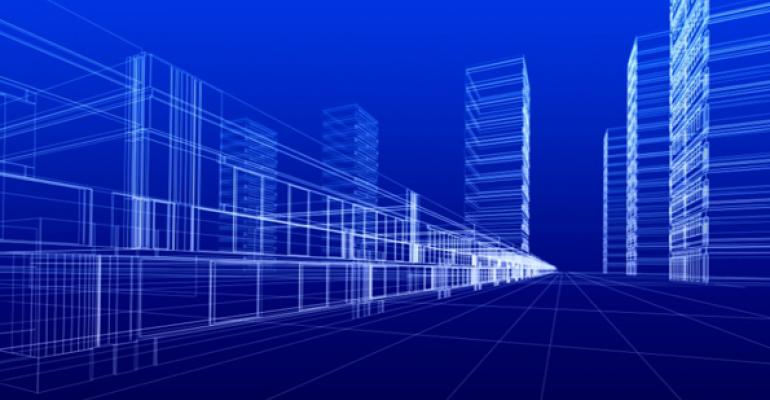Following its tepid pace over the past few years, retail development is on the verge of taking a giant leap forward as the pipeline of proposed projects continues to expand.
New construction dropped off a cliff during the worst of the recession. According to data from DTZ, the combined volume of retail space built in the four-year period between 2009 and 2012 totaled 19.3 million sq. ft. Yet activity began accelerating in 2013 with 17.1 million sq. ft. of new space built in 2013 and another 23.7 million sq. ft. of completions last year. In fact, that volume in 2014 was just shy of the peak level of 25.5 million sq. feet that was built in 2005, according to DTZ.
“We are back to very, very aggressive construction levels,” said Garrick Brown, vice president of research for the West region at DTZ, in a webinar broadcast earlier this week on retail market trends in 2015. “That makes sense, because we are getting further and further away from the downturn, and the economy seems to be doing better and better,” he added. The company is tracking another 19.2 million sq. ft. that is currently under construction.
“We are certainly off the lows that we were in back in the depth of the recession,” agrees Bill Moston, senior vice president of national retail development at JLL. “We’re seeing a lot of activity on the redevelopment front, and we are positive about where things are going for the next couple of years.”
Although industry data on retail construction activity varies widely, firms do agree on the overall trend that the slow pace of developing is clearly accelerating. Marcus & Millichap reports construction levels that have hovered at roughly 50 million sq. ft. of completions per year since 2009. That activity has been dominated largely by single-tenant development from occupants such as banks, restaurants, dollar stores and grocery stores, says Bill Rose, vice president and national director of Marcus & Millichap’s National Retail Group.
Marcus & Millichap expects that annual volume to double in 2016, 2017 and 2018 as construction expands out beyond single-tenant driven projects to a wider variety of retail properties. “The wave that is now coming is a lot of shopping centers that are in various stages of planning that are coming to the market between now and 2018,” says Rose. Marcus & Millichap is tracking a total pipeline of roughly 300 million sq. ft. of new retail projects. “The caveat is that not all of those are going to get approved or built,” he adds.
The pipeline is expanding to include more multi-tenant properties. For example, Marcus & Millichap is tracking over 400 grocery-anchored shopping centers that are planned or in some stage of the permitting process. That surge in activity is due to a number of factors—pent-up demand, improving economy, absorption of space and accelerating retailer expansion.
The big question is what is being built and where. Major markets such as New York and San Francisco are seeing some very large-scale projects proposed, such as the Hudson Yards redevelopment in Manhattan and the redevelopment of the former Candlestick Park stadium site in San Francisco that includes a proposal for a new 500,000-sq.-ft. shopping center.
The shopping centers built across the U.S. in recent years have been overwhelmingly urban, mixed-use projects. “A lot of that has been chasing the millennial consumer, who rightly or wrongly, has been described as being an urban dweller, perennial renter who hates the suburbs,” noted DTZ's Brown. He estimates that nearly half of the new construction that occurred last year involved urban retail projects, while another dominant source of activity was the expansion of existing centers, phase twos or additional pad site development.
The majority of activity is focused on the redevelopment and expansion of existing assets, agrees Moston. “That’s where we see a lot of opportunity right now,” he says. For example, the Mall of America in Bloomington, Minn., is moving forward with a $2 billion expansion that has been years in the making. The mall started construction late last year on a project that will add three levels of new retail space, as well as an office building and a luxury hotel. Completion is tentatively set for fall 2015.
In addition, landlords, developers and lenders appear willing to take on a bit more leasing risk on new projects. About 75 percent of the 19.2 million sq. ft. of space currently under construction has leasing commitments compared to the 90 percent pre-leasing that was in place on space built in 2014 and 95 percent pre-leasing in 2013 completions, according to DTZ.
Yet pre-leasing remains a critical component. “If we can finance these projects under reasonable construction loans, and if developers can secure a good tenant mix, they will all get green-lighted,” says Rose. “But you are not going to see the days of old, where spec development would occur and you built it in the hope that retailers will come. Those won’t get done.”

